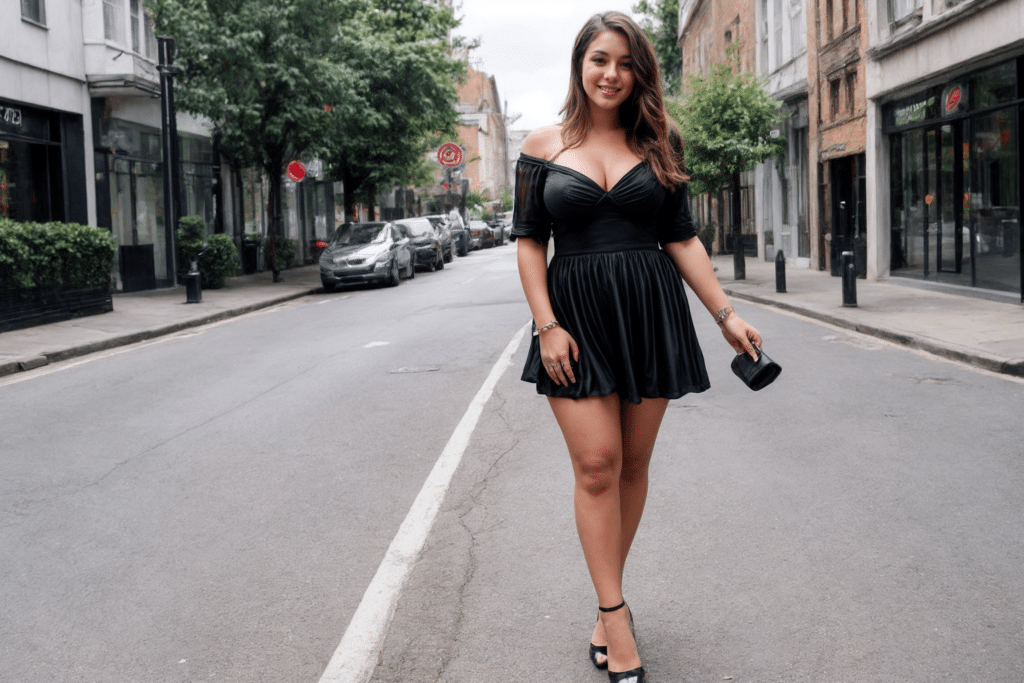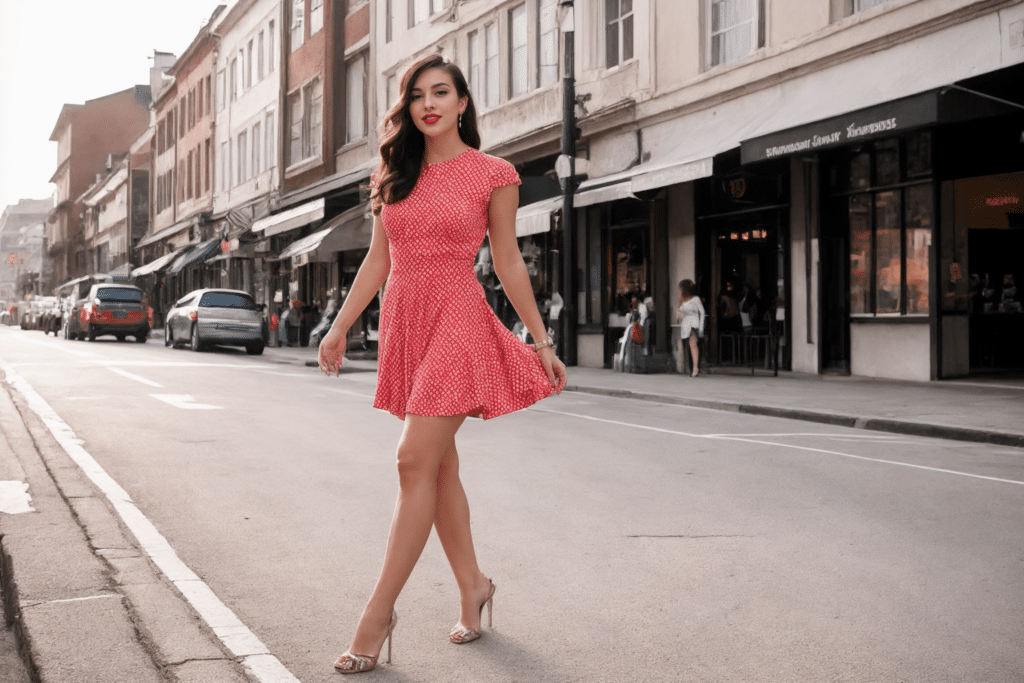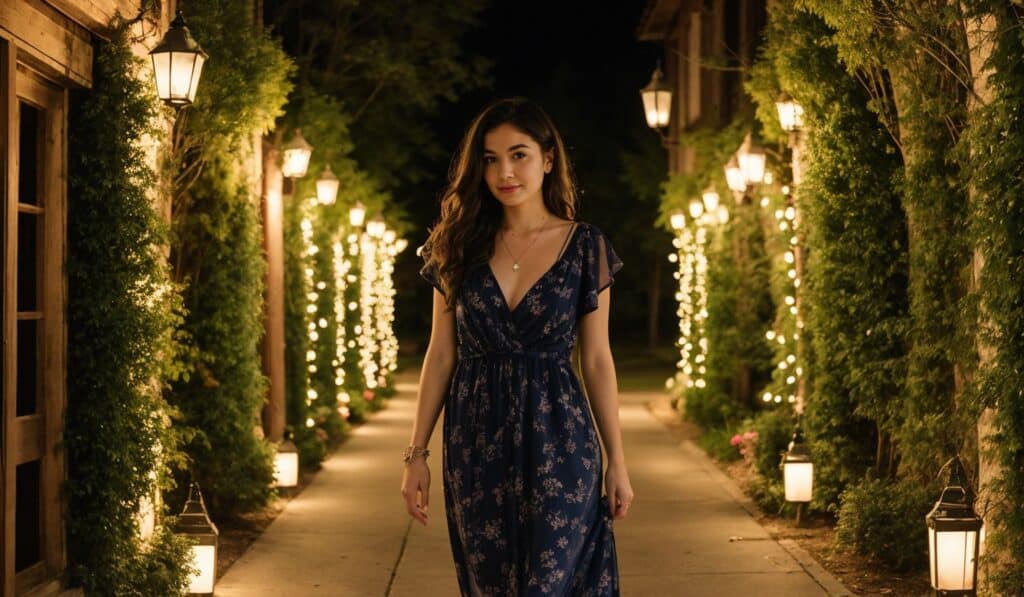Like a curve in a classic pin-up dress, I’ve always been drawn to the irresistible allure of pin-up style. It’s not just about the clothes, it’s the attitude, the empowerment. It’s reshaped fashion, challenged norms, and championed body positivity. I’m excited to dive into this riveting topic, examining how pin-up style revolutionized the fashion industry and continues to make waves today. So buckle up, we’re about to go on a stylish, history-filled ride!
Key Takeaways
- Pin-Up style revolutionized fashion by shifting women’s fashion and attitudes towards femininity.
- Pin-Up style represents sexual liberation and the celebration of women’s bodies, contrasting with the submissive representation of women in prior years.
- Pin-Up style influenced fashion silhouettes and elements, revolutionizing the fashion industry and reshaping it.
- Pin-Up style embraces all body types, encourages self-love and appreciation of bodies, and breaks away from conventional beauty standards.

The Origins of Pin-Up Style
As we delve into the origins of Pin-Up style, it’s crucial to understand that this iconic fashion trend first emerged in the early 20th century. The Pin-Up style was not just a fashion trend, but a cultural phenomenon that influenced society in ways that still resonate today.
‘Pin-Up Propaganda’ played a significant role in this. The government used pin-up images to boost morale during World War II. Soldiers carried these iconic illustrations of attractive, confident women as a reminder of the home and the freedoms they were fighting for. The images were a safe, non-controversial way to keep spirits high during a time of uncertainty and fear.
These illustrations not only helped in the war effort but also revolutionized the fashion industry. The pin-up style was unique, presenting women as both desirable and strong. This was a departure from the demure, submissive image of women prevalent at the time. Women started to emulate the confidence and glamour of these pin-ups, leading to a significant shift in women’s fashion and attitudes towards femininity. The pin-up style made a bold statement: women could be both attractive and empowered.
Pin-Up: A Symbol of Empowerment
In the face of societal norms, I can’t help but see the pin-up style as a powerful symbol of female empowerment. With its feminist undertones, the pin-up style represents a form of sexual liberation, where women are not shamed for their bodies, but rather celebrated.
The pin-up style is characterized by self-assured women, unapologetically expressing their sexuality. The era’s depiction of women in confident, sometimes provocative, poses was a stark contrast to the modest, submissive representation prevalent in prior years. This style didn’t merely serve as a fashion statement; it was a bold declaration of independence and autonomy.
The feminist undertones of pin-up style are undeniable. It was a woman’s choice to be a pin-up model, and in making that choice, she was taking control of her image and sexual power. The pin-up style allowed women to embrace their sexuality without fear of societal scorn.
The style’s influence on sexual liberation is profound. It helped pave the way for a society where a woman’s choice to express her sexuality is respected and celebrated. In a world where women’s bodies are often policed, the pin-up style stands as a beacon of empowerment.
Pin-Up’s Influence on Fashion Industry
While I’m captivated by the empowerment aspect of the pin-up style, it’s hard to ignore its significant impact on the fashion industry. The pin-up style has not only influenced the silhouettes and elements of fashion designs but has also paved the way for the commodification of fashion.
This pin-up commodification is apparent in how the industry has capitalized on pin-up’s popularity, creating products and collections that embody its timeless appeal. From clothing lines to accessories and even home decor, the pin-up style has been commercialized in a way that makes it accessible and desirable to the modern consumer.
Celebrity endorsements have played a crucial role in the pin-up’s influence on fashion. Stars such as Dita Von Teese and Katy Perry have embraced the pin-up look, popularizing it on red carpets and concert stages. Their influence has amplified the reach of pin-up style, making it a mainstream trend.
The pin-up style has undoubtedly revolutionized fashion, but its influence extends beyond aesthetics. It’s become a symbol of empowerment, a commercial commodity, and a trend amplified by celebrity endorsements. The fashion industry, in turn, has been reshaped by its impact.
Pin-Up Style and Body Positivity
Moving on from its commercial impact, it’s worth noting that the pin-up style has also championed body positivity, breaking away from conventional beauty standards. This style has become a platform for self-love promotion and celebrating pin-up diversity.
Consider the following points:
- Variety of Sizes: Pin-up style embraces all body types, showcasing women in diverse sizes. This contradicts mainstream fashion’s often exclusive focus on slim figures.
- Self-Love Promotion: The pin-up aesthetic encourages women to love and appreciate their bodies. This has been a significant shift from societal norms pressuring women to fit into a specific mould.
- Unique Aesthetic: Pin-up style celebrates individuality, encouraging women to embrace their unique features. Its emphasis lies not on conformity, but on showcasing and enhancing what makes each woman unique.
- Confidence Boost: The bold, vibrant nature of pin-up fashion inspires women to assert themselves confidently. Its empowering ethos promotes an attitude of self-assuredness, which is inherently attractive.

The Modern Relevance of Pin-Up
Building on the notion of body positivity, I’m now turning my focus to the relevance of pin-up style in today’s fashion landscape. Pin-up aesthetics have experienced a resurgence, embraced by a new generation seeking to redefine beauty standards. The modern interpretations of this style are a testament to its enduring allure and adaptability.
The pin-up aesthetics, with their emphasis on curves and femininity, provide an antidote to the unattainable standards of beauty often promoted in mainstream fashion. These aesthetics are not just about how clothes look, but how they make us feel. They encourage us to appreciate our bodies, regardless of size or shape, creating a safer, more inclusive space in the fashion world.
Modern interpretations have seen pin-up style imbued with a contemporary twist, marrying vintage silhouettes with modern sensibilities. From high-waisted bikinis to body-hugging dresses, the pin-up style is about celebrating the female form, rather than hiding it.
Moreover, the pin-up style has permeated beyond fashion, influencing the beauty and lifestyle sectors as well. It’s a movement that speaks to empowerment and body autonomy, resonating with those who value self-expression and individuality in their fashion choices.
Pin-Up Style’s Cultural Impact
Now, let’s delve into how pin-up style has shaken up our cultural landscape.
- The Representation of Women: Pin-up style has been both celebrated and criticized for its depiction of women. On one hand, it champions femininity and sexuality. However, it’s also been accused of perpetuating harmful stereotypes, confining women to roles of mere objects of desire.
- Racial Inclusion and Pin-Up Racism: Historically, pin-up predominantly featured white women, thus excluding women of color. This led to accusations of pin-up racism. Today, there’s a growing effort within the pin-up community to celebrate diversity and include women of all races and ethnicities.
- Body Positivity: The pin-up style, with its celebration of curves, has been instrumental in challenging the stick-thin ideal of beauty. It advocates for body positivity, celebrating all body types.
- Influence on Modern Fashion: Pin-up style has left an indelible mark on fashion. It’s influenced everything from swimwear to lingerie, and continues to inspire designers today.
Understanding how Pin-Up Style Revolutionized Fashion and the cultural impact of helps us appreciate its complexity. It’s more than a fashion trend. It’s a powerful cultural force that has both reflected and shaped societal attitudes towards women.









